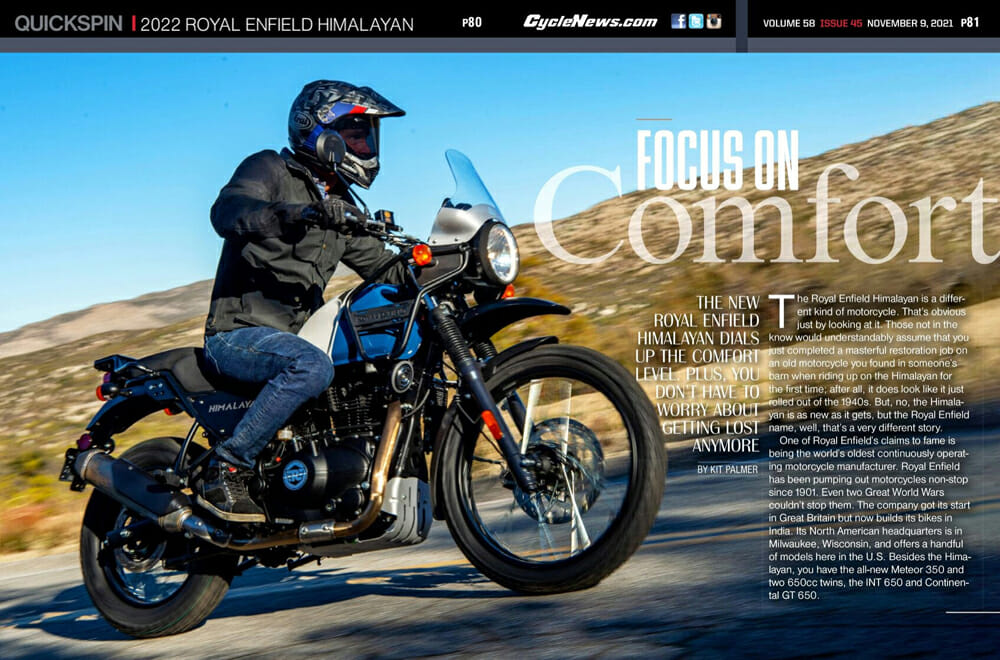Kit Palmer | November 17, 2021
The new Royal Enfield Himalayan dials up the comfort level. Plus, you don’t have to worry about getting lost anymore.
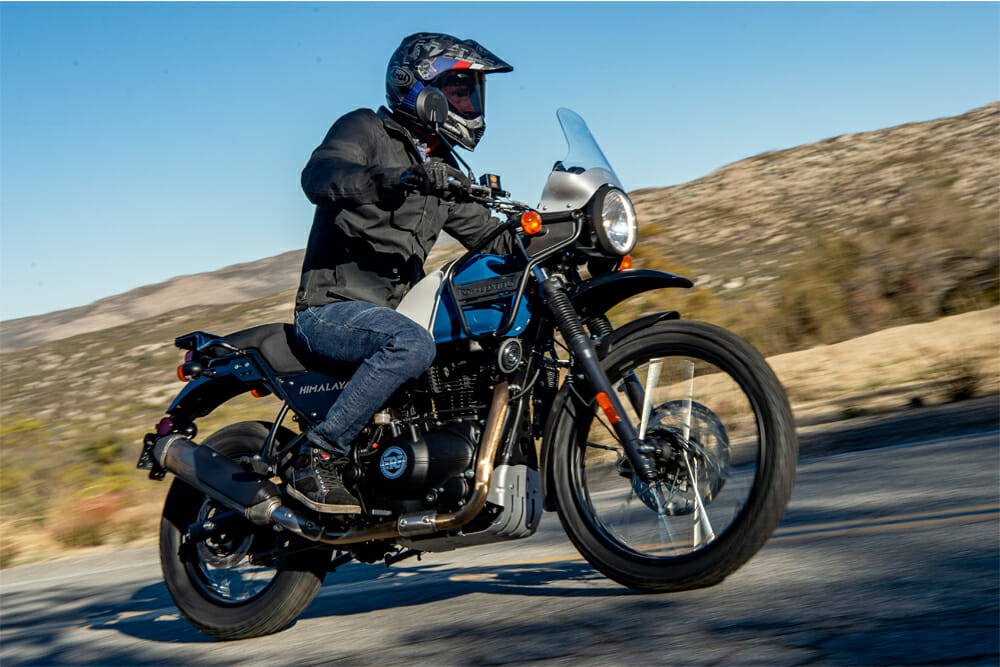
By Kit Palmer
The Royal Enfield Himalayan is a different kind of motorcycle. That’s obvious just by looking at it. Those not in the know would understandably assume that you just completed a masterful restoration job on an old motorcycle you found in someone’s barn when riding up on the Himalayan for the first time; after all, it does look like it just rolled out of the 1940s. But, no, the Himalayan is as new as it gets, but the Royal Enfield name, well, that’s a very different story.
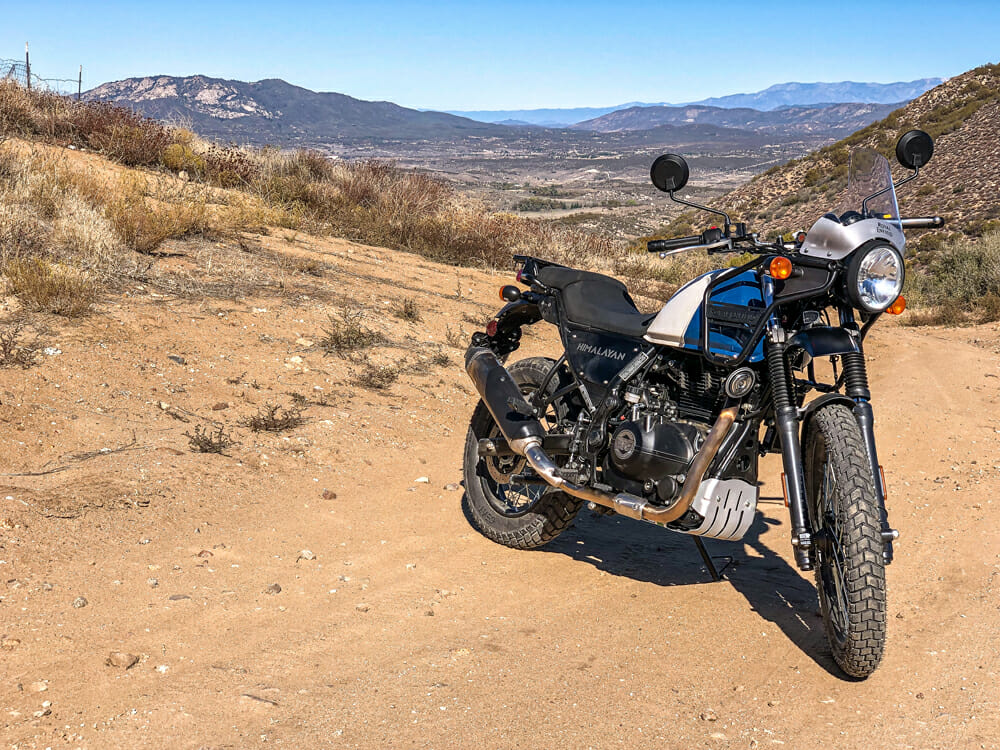 Want to get away for a while? The Royal Enfield Himalayan is a perfect way to do that.
Want to get away for a while? The Royal Enfield Himalayan is a perfect way to do that.
One of Royal Enfield’s claims to fame is being the world’s oldest continuously operating motorcycle manufacturer. Royal Enfield has been pumping out motorcycles non-stop since 1901. Even two Great World Wars couldn’t stop them. The company got its start in Great Britain but now builds its bikes in India. Its North American headquarters is in Milwaukee, Wisconsin, and offers a handful of models here in the U.S. Besides the Himalayan, you have the all-new Meteor 350 and two 650cc twins, the INT 650 and Continental GT 650.
The Himalayan is now five years old in the U.S., arriving on the scene as a small-capacity adventure motorcycle designed to tackle semi-challenging terrain but at a much more sedate pace than many of its higher-performance and higher-priced competitors.
Yes, perhaps the most compelling thing about the Himalayan is its price. It retails for just $5299. How can you not think twice about that?
And then there’s the retro styling that makes it stand out from the other rides in its class. Right away, there are lots to like about the Himalayan before you even throw a leg over it.
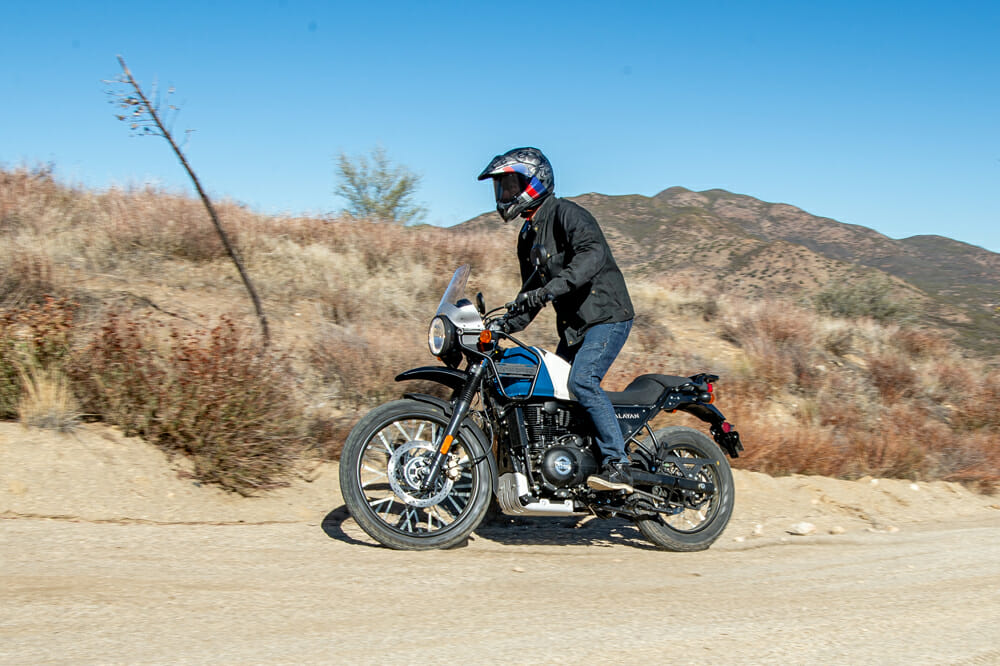 The classic styling of the very affordable Himalayan doesn’t trick you into thinking it’s something that it’s not, since RE passed on giving it a modern look with “racey” plastic and paint. ADV riding is not always about going fast (or looking fast).
The classic styling of the very affordable Himalayan doesn’t trick you into thinking it’s something that it’s not, since RE passed on giving it a modern look with “racey” plastic and paint. ADV riding is not always about going fast (or looking fast).
Royal Enfield just revealed its latest Himalayan, with its new Tripper navigation system and improved rider comfort, and just a few days later, we got the chance to ride it.
As before, the Himalayan is driven by an air/oil-cooled 411cc single-cylinder, SOHC four-stroke engine that delivers a whopping 24 horsepower and 23.6 lb-ft of torque. It’s fuel-injected and, while it might have that manual kick-starter look, don’t worry, it’s fitted with an electric starter.
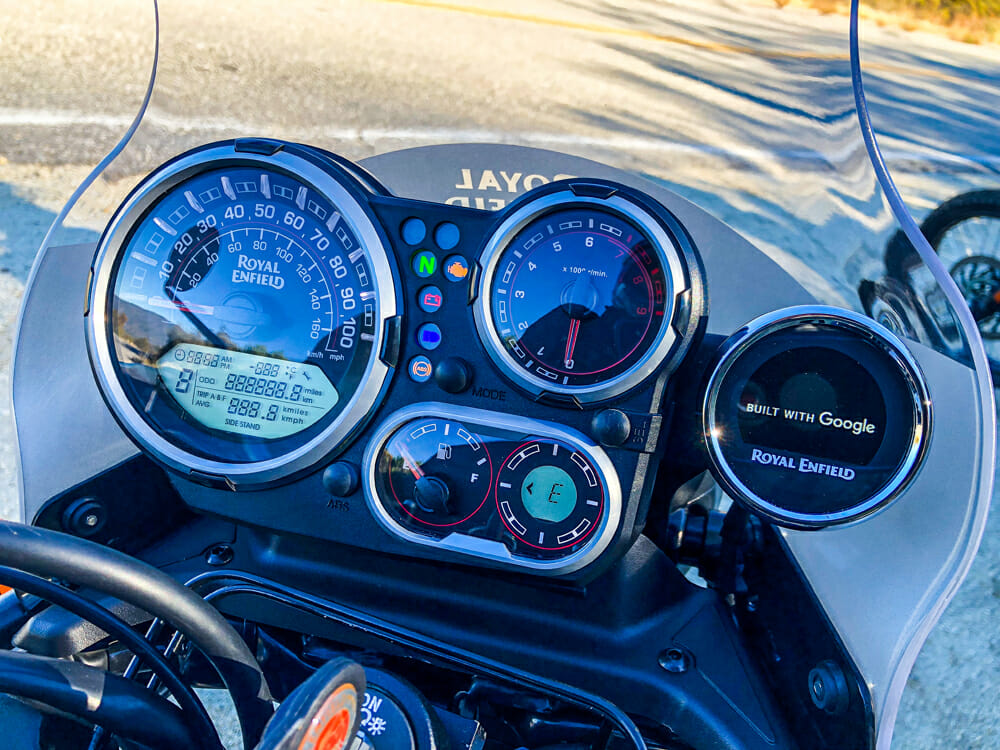 There are two important new features here—the Tripper GPS pod on the right, and the little button next to the fuel gauge that makes it easy to disengage the rear ABS.
There are two important new features here—the Tripper GPS pod on the right, and the little button next to the fuel gauge that makes it easy to disengage the rear ABS.
The engine rests on dual steel frame rails, and the whole package weighs in at approximately 440 pounds, according to Royal Enfield’s numbers. It has modern disc brakes with ABS, and it rolls on 21-inch front and 17-inch rear wheels that are fitted with Pirelli MT60 dirt/street tires.
The Himalayan is offered in six (up from three) colorways, including Lake blue, the color of the Himalayan you see on these pages.
The first (and last) Himalayan we tested was the 2020 Royal Enfield Himalayan and our biggest takeaway was how well it performed for such an old-school-looking and inexpensive motorcycle. (Back then, the Himalayan sold for $4749, so the price has gone up slightly.) We said that part of the Himalayan’s charm was its simplicity, yet it still did everything it needed to do to take you out for a great adventure on two wheels. The same holds true today, even more so.
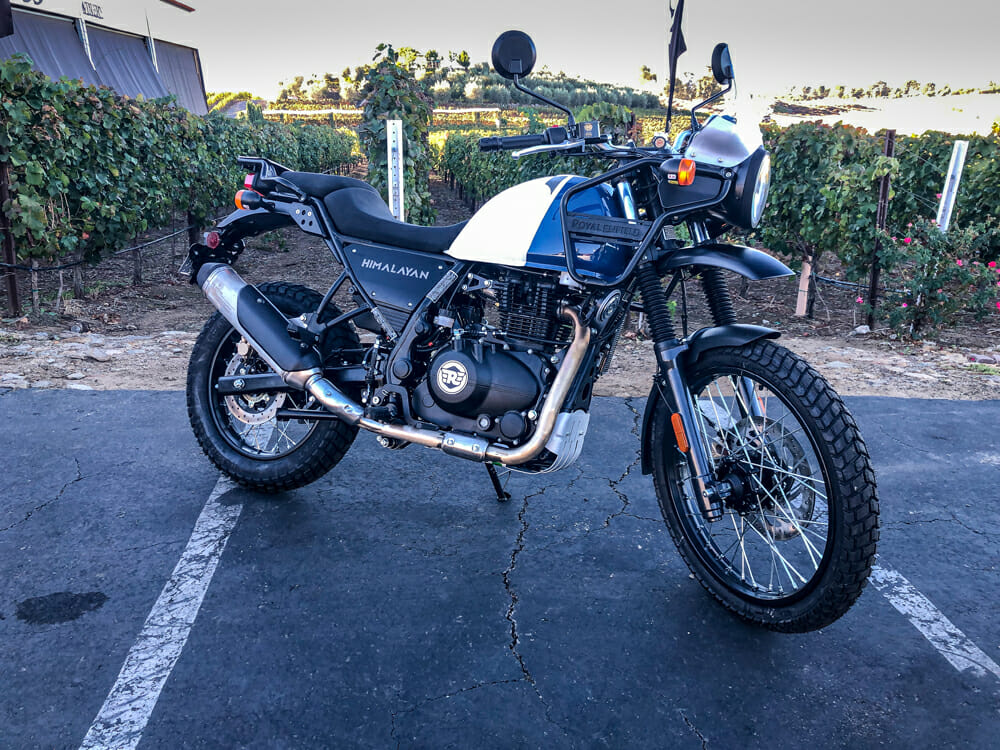
This was my first time on any Himalayan, and I must agree with our last test. It is a surprisingly capable motorcycle both on and off the road, but the key to enjoying the Himalayan at its best is taking your time on it. This bike inspires you to slow down and soak in the sights, one of the best qualities of adventure riding anyway.
It only has seven-plus inches of wheel travel, but the Himalayan makes the most of those seven inches, and since there are only 8.6 inches of ground clearance, you quickly learn what the Himalayan’s boundaries are, and they are just wide enough to still have fun, even if the bike doesn’t like to be jumped. It’s not crazy about G-outs, either.
The Himalayan is a comfortable motorcycle, and the low 31.5-inch seat height gives you confidence rolling up to a stop and while riding over technical terrain. It’s easy to plant your foot solidly on the ground, which is great for new riders, too.
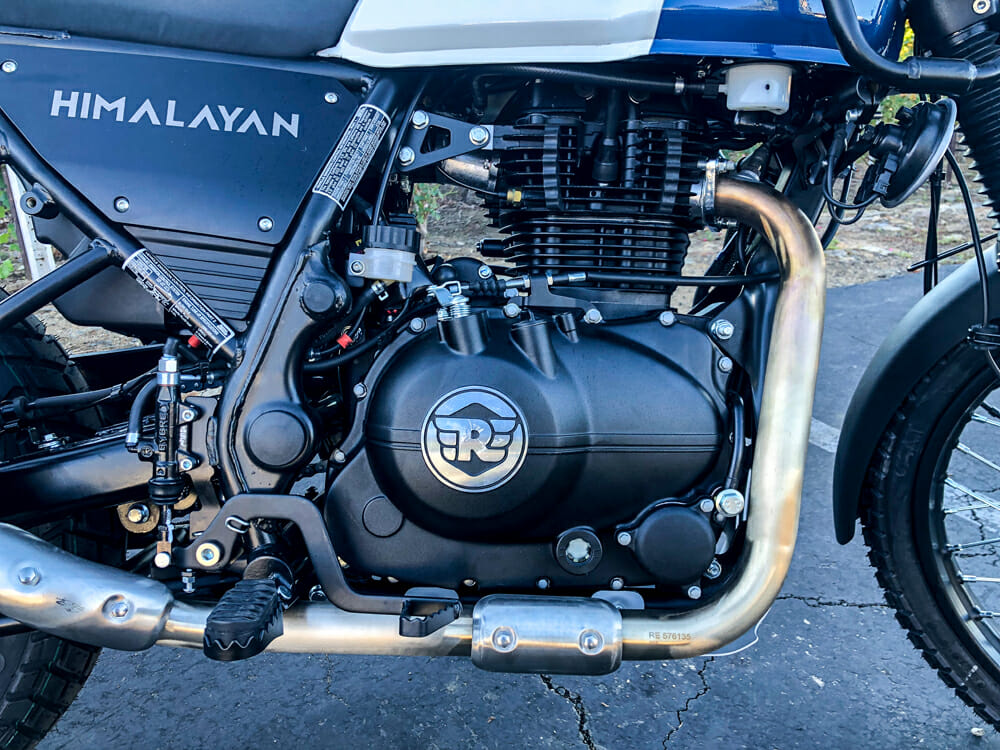 The Himalayan’s pleasant 411cc single-cylinder four-stroke engine makes 24 horsepower, just enough to entertain you, and the seven-plus inches of suspension travel is just enough to handle it.
The Himalayan’s pleasant 411cc single-cylinder four-stroke engine makes 24 horsepower, just enough to entertain you, and the seven-plus inches of suspension travel is just enough to handle it.
The Himalayan is proof that you don’t need boatloads of horsepower to have a good time. It’s not a fast motorcycle, but it’s not designed to be. As long as you remind yourself that there is no checkered flag at the end of the trail, you’ll be just fine on the Himalayan.
First gear is low enough to crawl up almost anything. However, I found the gap between first and second to be somewhat wide at times, most notably on the dirt, especially while climbing small hills. I quickly learned that, when in doubt, shift up and second gear will usually do the trick; when you think the engine is about to stall, it just keeps plugging away (with a bit of assistance from the clutch). Otherwise, the five-speed transmission works in harmony with the motor.
I spent a good chunk of time on the pavement aboard the Himalayan and found it quite pleasant. For a small-bore single-cylinder four-stroke, vibes are very acceptable up to its 6500-rpm redline. The bike is plenty fast enough to keep up with the traffic flow, though I would always seek out the back routes on this bike and do my best to avoid the busy open highways if it were my bike.
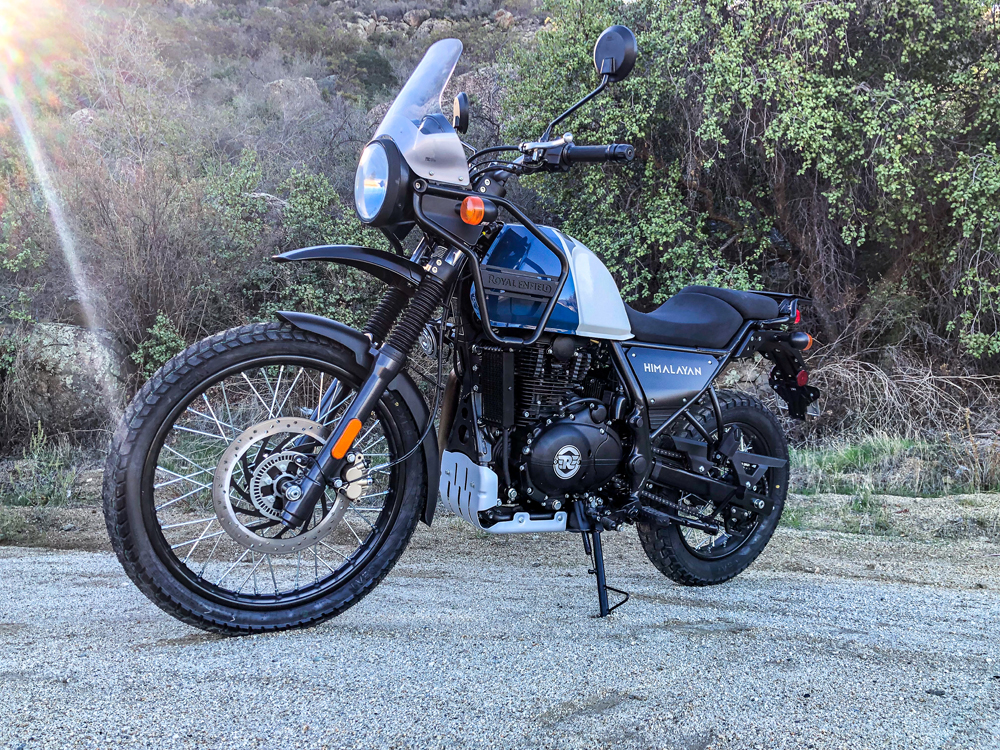
Although I wasn’t on it long enough to calculate, I do know that our 2020 Himalayan averaged 55 mpg, which bought you an easy 200-plus miles from the four-gallon fuel tank. I expect the ’22 to do the same.
So, what is the difference between the previous Himalayan and the newest one? There are a few things. Perhaps most notable, you can now quickly disengage the rear ABS via a button on the dash. It works by pressing it for five to six seconds as soon you turn on the ignition, then hit the starter button. If the ABS light starts to blink, you did it correctly. If not (doesn’t blink), you must start the process over again. The front ABS remains engaged, though I never felt it kick during this ride. It’s not obtrusive at all, that is for sure.
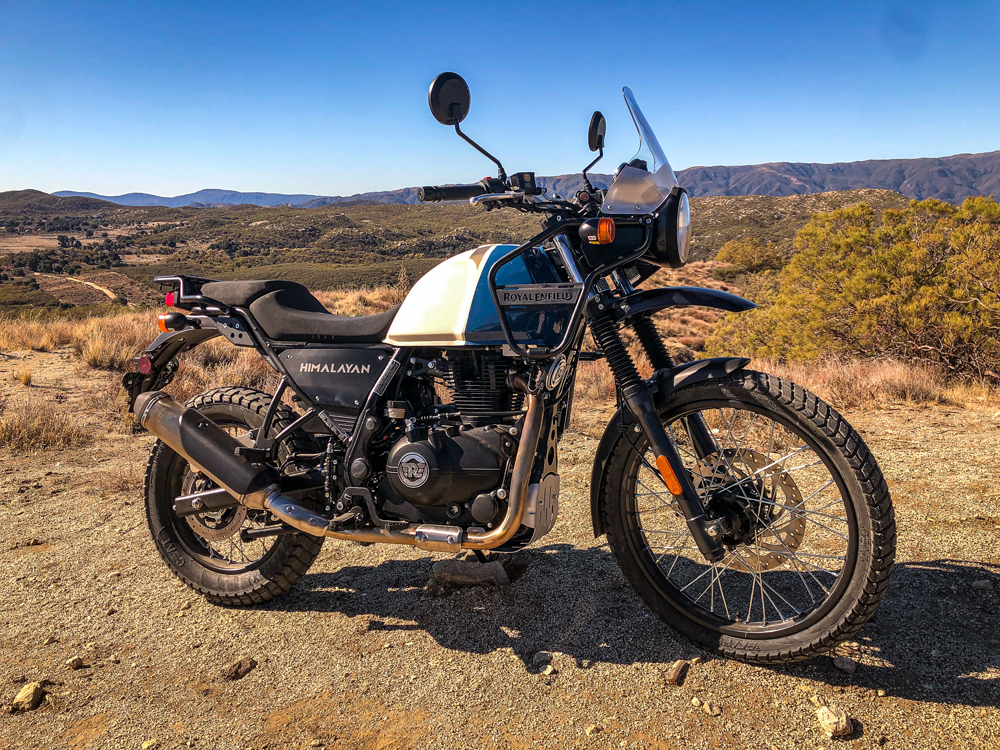
The other big news is what RE calls its Royal Enfield Tripper Navigation system, which is new to the North American market. A somewhat small circular pod has been added to the right side of the instrument dash that displays intuitive turn-by-turn navigation through the Google Maps platform. To make it all happen, you must pair it with your smartphone via the Royal Enfield App. To make alterations (like to change destinations), you must stop and retrieve your smartphone, which sounds like a bit of a pain but is probably better than fiddling with it while you’re riding. When not in navigation mode, the pod turns into a clock.
Focus went into making the Himalayan even more comfortable. It has new seat padding and a new windscreen. The updated screen, combined with the large round headlight, does an admirable job deflecting the windblast off the rider.
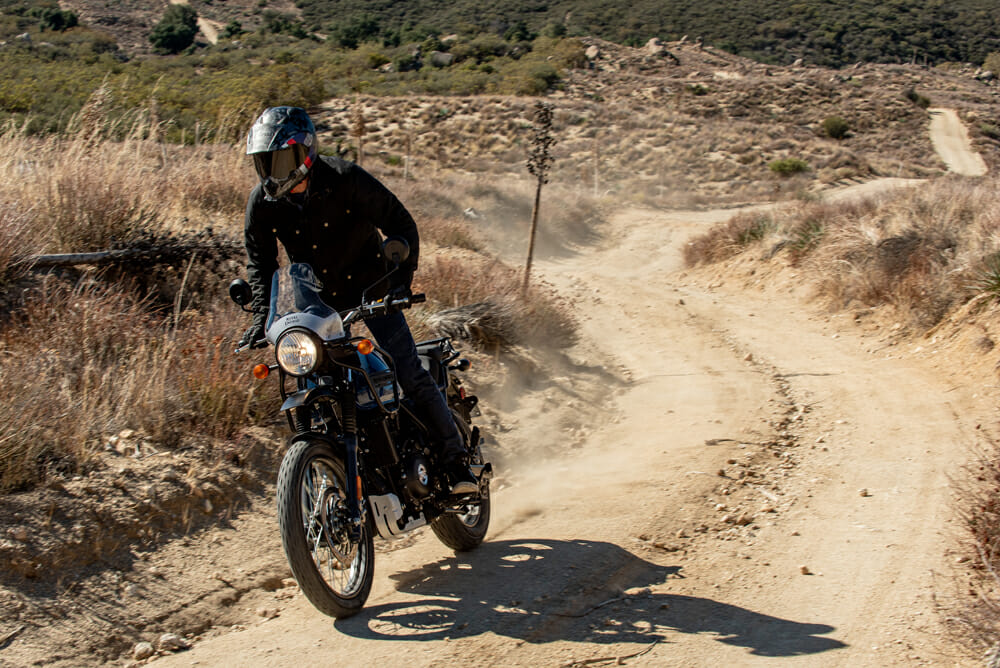 The Himalayan inspires you to slow down and soak in the sights.
The Himalayan inspires you to slow down and soak in the sights.
The front rack, those protective tubular steel bars next to the fuel tank that is impossible not to notice, are shorter in length to prevent bruised kneecaps.
Also, the rear carrier rack has been redesigned. It’s now lighter and provides improved fastening and placement of luggage. The rack is also positioned lower, making it easier to swing your leg over the bike.
So, the new Himalayan might cost more than the Himalayan we last rode in 2020, but, as you can see, you do get a lot for that extra $550, but you can take some solace knowing it’s only $300 more than the 2021 Himalayan.
Overall, I like how Royal Enfield took a different approach to adventure riding, combining simplicity with good performance and comfort, sprinkling it with some nice amenities, and putting it all together for a low price. And how can you not love its retro look? CN
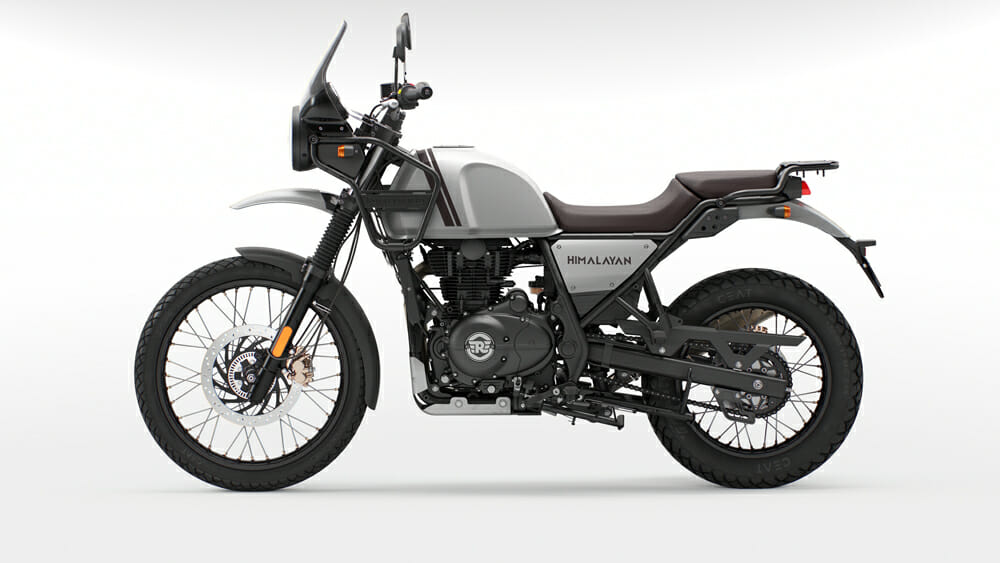
2022 Royal Enfield Himalayan Specifications
| MSRP: |
$5,299 |
| Engine Type: |
4-stroke, single-cylinder |
| Valvetrain: |
SOHC |
| Cooling System: |
Air/oil |
| Displacement: |
411cc |
| Compression Ratio: |
9.5:1 |
| Max Horsepower (claimed): |
24.3 hp at 6500 rpm |
| Max Torque: |
23.6 at 4000-4500 rpm |
| Ignition: |
Digital electronic |
| Clutch: |
Wet, multi-plate |
| Transmission: |
5-speed |
| Lubrication: |
Forced, wet sump |
| Fueling: |
EFI |
| Starting System: |
Electric |
| Chassis: |
Half-duplex split double cradle, steel |
| Front Suspension: |
Telescopic fork, 41mm, non-adjustable |
| Rear Suspension: |
Single shock w/linkage, non-adjustable |
| Front-Wheel Travel: |
7.8 in. |
| Rear-Wheel Travel: |
7.0 in. |
| Front Tire: |
Pirelli MT60 90/90-21 in. |
| Rear Tire: |
Pirelli MT60 120/17 in. |
| Front Brake: |
Single 300mm disc, 2-piston floating caliper; ABS |
| Rear Brake; |
Single 240mm disc, 1-piston floating caliper; ABS |
| Wheelbase: |
58 in. |
| Ground Clearance: |
8.6 in. |
| Seat Height: |
31.5 in. |
| Weight (curb, claimed): |
439 lbs. |
| Fuel Capacity: |
4 gal. |
| Colors: |
Granite Black; Mirage Silver; Pine Green; Rock Red; Lake Blue; Gravel Grey |
